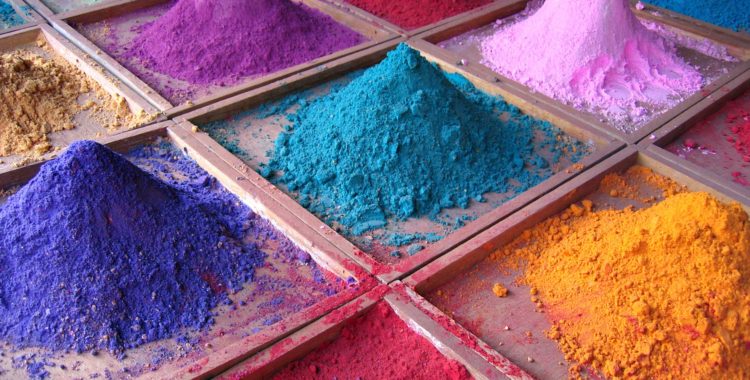
The Economics of Color, Part 1
April 05, 2016
by Diana Greenwald | Filed in: Interdisciplinary
This is the first of three blog posts about the economics of color
A new exhibition just opened at the J. Paul Getty Museum in Los Angeles: Noir: The Romance of Black in 19th-Century French Drawings and Prints. The show explores the growing and changing use of black—and new black materials like charcoal—in nineteenth-century French art. Speaking to National Public Radio, the curator of the show described how the use of black is linked to underlying changes in the social and economic fabric of France. “The air was terrible,” said Lee Hendrix, Noir‘s curator. “Urban violence was becoming a regular thing. The city — and especially the night city, and the city of Paris itself — began to take on life as a kind of demonic domain.” The creation of a threatening and polluted artistic aura resembling the increasingly threatening and polluted urban environment links the colors that artists used broader to social and economic change.
It is, however, also possible to trace more direct links between color and economics. As the Getty’s video and accompanying book “The Brilliant History of Color in Art” succinctly describes: colors have to be made with other raw materials that had financial value. These materials were sourced and created with the help of trade routes and technology central to the broader economy. Which colors painters could use and chose to use was arguably as much a function of the materials’ relative scarcity as stylistic choices.
A poignant example of this is the use of certain shades of blue in early modern Europe. Created using the rare stone lapis lazuli, Renaissance painters used the expensive pigment for the garb of the holiest figures—like the robes of the Virgin in a Madonna by 15th-century master Masaccio—or to cover the ceilings and backgrounds of chapels donated by the wealthiest donors, like Giotto’s Scrovegni Chapel. The known expense of the color was used to display the importance or wealth of subjects and patrons. Stylistic choices were made to reflect and highlight financial realities. This point was demonstrated in the recent show Lapis Lazuli: The Magic of Blue at the Palazzo Pitti in Florence, Italy.
Colors’ association with monetary value is, however, not the only direct link between pigment and economics. The next blog post will explore the effects of economic disruption—war, trade embargoes, etc.—on the scarcity of color and the effect of this scarcity on artistic style.
<< Daughters Change Everything…
